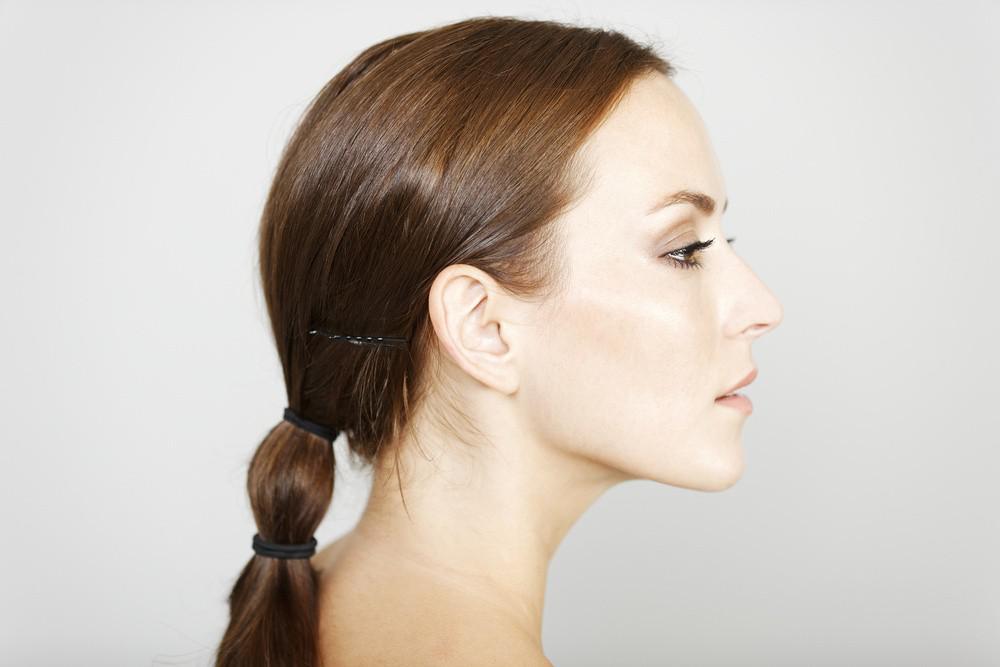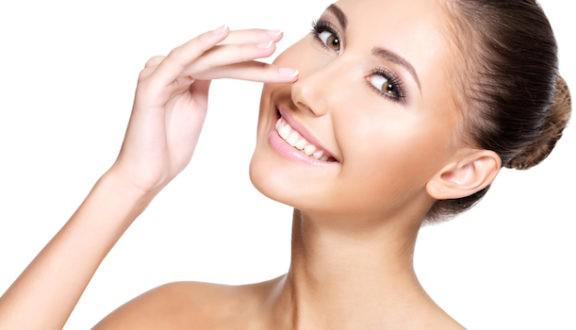
A rhinoplasty procedure is concerned with the bones and cartilage of the nose. Depending on the concerns of the particular patient, it can range from simple to complex surgery, and is one of the most popular aesthetic surgeries in Ireland. The procedure can address a number of issues, from removing a small bump on the bridge of the nose or reducing the size of an excessively large nose, to straightening a nose made crooked by design, by accident, or simply by nature.
The options are many but all have the same concern: to give a more aesthetically pleasing appearance (there are of course medical reasons for surgery too, such as when breathing is affected). For most people though, they are addressing an aesthetic concern that may be something they’ve dealt with all their life up until now, while for others an accident may have altered the appearance of their nose and they want it addressed. Given the nose’s position right in the centre of the face, it has a huge effect on the aesthetic and facial appearance as a whole.
One aspect that is not always considered is the relationship between the nose and the upper lip – and what happens to the latter when the former undergoes any sort of surgery. You can see this connection for yourself – put your finger on the tip of your nose and gently push up: does your upper lip move? For most people, an interaction with the nose will lead to movement of the upper lip. When it comes to surgery, a nose job or rhinoplasty can affect the look and projection of the upper lip – permanently. It is something that needs to be take into account prior to surgery and an experienced surgeon will factor it in.
Quite often a nose job will aim to increase what’s called tip projection: essentially the distance of the tip of the nose from the rest of the face. This in turn changes the angle between the tip of the nose and the upper lip. Similarly, when the tip projection has been decreased, it can result in the upper lip dropping slightly.

This issue has come to particular notice recently thanks to a study published in a well- recognised medical journal JAMA Facial Plastic surgery. In the study, 18 out of 20 patients who underwent a rhinoplasty procedure saw an increase in upper lip projection after the surgery - specifically when the surgeons had used the two most common rhinoplasty methods (namely columellar strut and tongue-in-groove manoeuvre).
It is sometimes possible that a patient might want their upper lip more visible and this should be discussed with their surgeon before surgery. The JAMA study just goes to show that no one aspect of the face is or should be dealt with in isolation. I always emphasise to my patients that each aspect of their face or body should be taken into consideration alongside everything else; the whole aesthetic has to work in harmony if the surgery is to be deemed a success.
This study further highlights the fact that aspects of the face work in conjunction with each other and a surgeon needs to take into account all the possible effects from any surgical decision made.
If you are considering rhinoplasty or any other cosmetic surgery procedure, we can advise on the best options for you. Contact us to arrange a consultation.
Find out all you need to know about cosmetic procedures and the factors you need to consider in our free guide: Considerations Before Deciding on Cosmetic Surgery and Post-Treatment Care:
Download Mr. Chan's Guide to Cosmetic Surgery Considerations

A rhinoplasty procedure is concerned with the bones and cartilage of the nose. Depending on the concerns of the particular patient, it can range from simple to complex surgery, and is one of the most popular aesthetic surgeries in Ireland. The procedure can address a number of issues, from removing a small bump on the bridge of the nose or reducing the size of an excessively large nose, to straightening a nose made crooked by design, by accident, or simply by nature.
The options are many but all have the same concern: to give a more aesthetically pleasing appearance (there are of course medical reasons for surgery too, such as when breathing is affected). For most people though, they are addressing an aesthetic concern that may be something they’ve dealt with all their life up until now, while for others an accident may have altered the appearance of their nose and they want it addressed. Given the nose’s position right in the centre of the face, it has a huge effect on the aesthetic and facial appearance as a whole.
One aspect that is not always considered is the relationship between the nose and the upper lip – and what happens to the latter when the former undergoes any sort of surgery. You can see this connection for yourself – put your finger on the tip of your nose and gently push up: does your upper lip move? For most people, an interaction with the nose will lead to movement of the upper lip. When it comes to surgery, a nose job or rhinoplasty can affect the look and projection of the upper lip – permanently. It is something that needs to be take into account prior to surgery and an experienced surgeon will factor it in.
Quite often a nose job will aim to increase what’s called tip projection: essentially the distance of the tip of the nose from the rest of the face. This in turn changes the angle between the tip of the nose and the upper lip. Similarly, when the tip projection has been decreased, it can result in the upper lip dropping slightly.

This issue has come to particular notice recently thanks to a study published in a well- recognised medical journal JAMA Facial Plastic surgery. In the study, 18 out of 20 patients who underwent a rhinoplasty procedure saw an increase in upper lip projection after the surgery - specifically when the surgeons had used the two most common rhinoplasty methods (namely columellar strut and tongue-in-groove manoeuvre).
It is sometimes possible that a patient might want their upper lip more visible and this should be discussed with their surgeon before surgery. The JAMA study just goes to show that no one aspect of the face is or should be dealt with in isolation. I always emphasise to my patients that each aspect of their face or body should be taken into consideration alongside everything else; the whole aesthetic has to work in harmony if the surgery is to be deemed a success.
This study further highlights the fact that aspects of the face work in conjunction with each other and a surgeon needs to take into account all the possible effects from any surgical decision made.
If you are considering rhinoplasty or any other cosmetic surgery procedure, we can advise on the best options for you. Contact us to arrange a consultation.
Find out all you need to know about cosmetic procedures and the factors you need to consider in our free guide: Considerations Before Deciding on Cosmetic Surgery and Post-Treatment Care:
Download Mr. Chan's Guide to Cosmetic Surgery Considerations